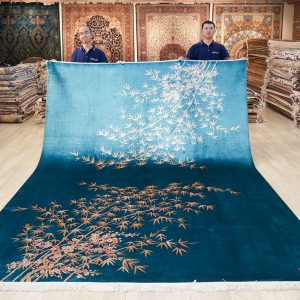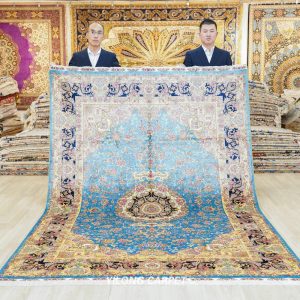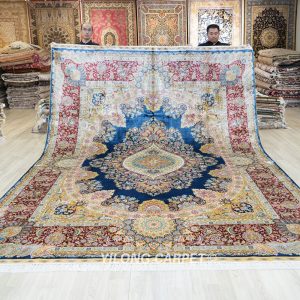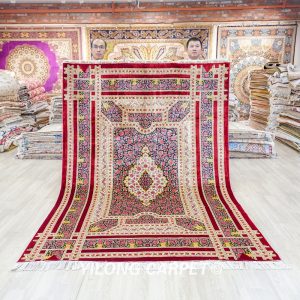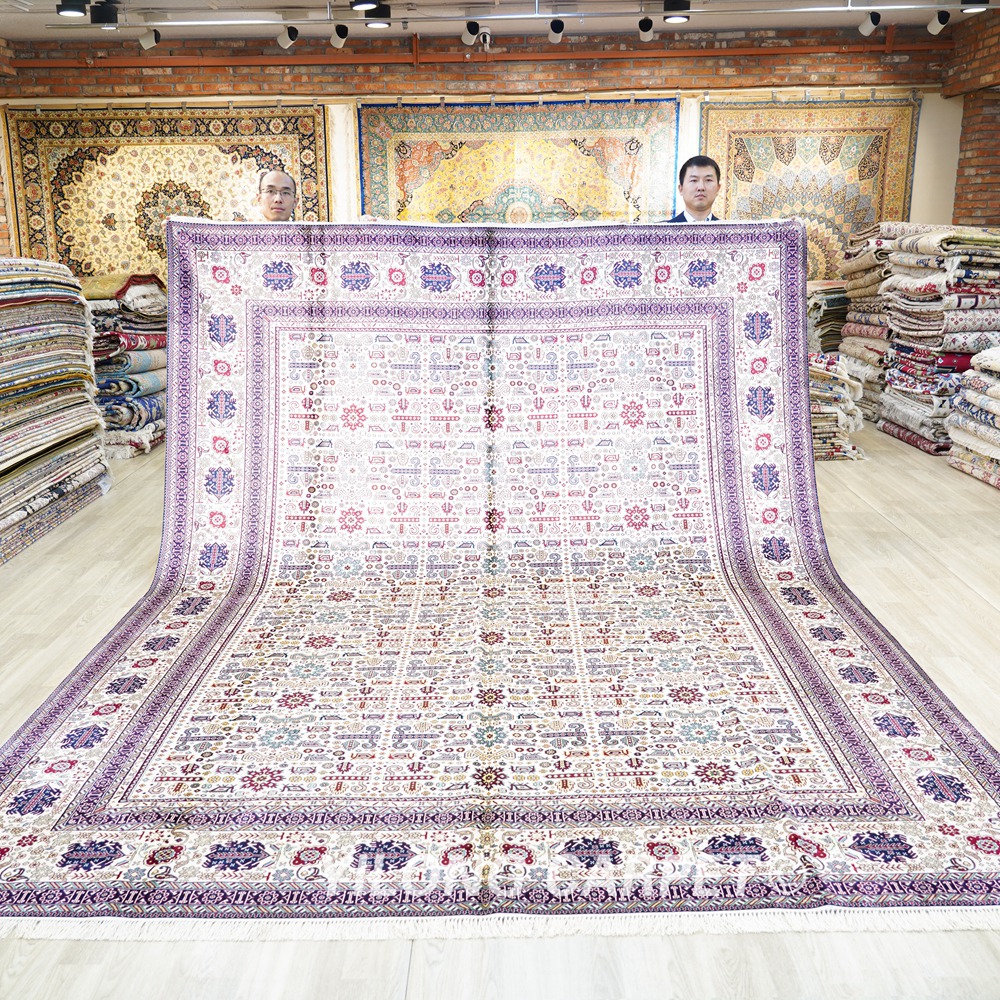Since primitive society, people have conveyed the meaning to be expressed through various symbols. As an important carrier of Persian culture, we can still find symbols that symbolize the sun, moon, hunting scenes and paradise gardens in Persian carpets. Although they are in different forms, they all represent ancient people's worship and worship of nature and the unknown world of gods. Grateful, the "Tree of Life" pattern is one of the typical representatives of these symbols.
Compared with other patterns, the tree of life pattern can be said to be the oldest symbol related to religion and mythology in human history. It can be said that it can be found in almost all handmade carpet cultures around the world.
In most of the "tree of life" patterned carpets, the roots of the tree are hidden deep at the bottom of the carpet, and the branches grow upward and spread around. Sometimes various birds and beasts surround the top and surrounding of the tree, such as parrots, peacocks and Deer, etc., they either perch or lie around the trees, showing a natural scene full of vitality and original ecology.
The "tree of life" pattern is not limited to a specific tree. In carpet designs in different regions, the types and images of trees are also different. The common ones are cypress, cedar, willow, fig tree, coconut tree and the more common Palm tree. The palm tree in Persian rugs is often regarded as a symbol of satisfaction and blessing, while the coconut tree often appearing in Indian rugs represents a kind of prayer.
In Persian culture, the "tree of life" represents longevity and endless life; in the Bible, it represents the Garden of Eden; in Muslim carpet patterns, it represents heaven and abundant grain and fruit; in Chinese handmade carpet patterns, it represents immortal. Although the meanings are slightly different, they generally represent people's yearning and longing for a better life.
The development and evolution of the "tree of life" pattern has gone through thousands of years. The pattern of the tree of life in 1400 AD is mostly thick roots without leaves, which looks more abstract. By AD 1600, they had evolved into lush, flowering trees. But no matter what form they appear in, most of them are dominated by delicate curves or tough geometric forms.
In Islamic culture, the tree of life symbolizes the bridge between heaven, the human world and the underworld. It is often accompanied by elements such as gardens, vases, and is also often found in prayer rugs.
For example, the Tree of Life handmade carpet from Afghanistan in the picture below uses hand-spun wool weaving and original plant dyeing process. In the center of the rug is a cypress tree with geometric patterns of flowers and birds, and two peacocks beneath the roots.
Birds represent faith and fertility in Persian culture, and peacocks imply immortality in Persian culture. The use of these two elements is also very consistent with the theme of this carpet "Tree of Life". Furthermore, in the border of the rug we can find one of the oldest symbols in Persian motifs, the "boteh", which is shaped somewhat like a paisley design and a cashew nut pattern, with a connotation of "eternity".
The tree of life pattern is favored by carpet lovers for its pictures full of vitality, beautiful implication, and unique religious attributes. Today, in the warehouse of Yilong handmade silk carpets, there are a few tree of life handmade silk carpets.
The size of this rug is 61cm x 91cm, and it took one weaver 3 months to weave it. The carpet surface depicts a pleasant scene full of vitality and the fragrance of birds and flowers. There are various resting birds and animals hovering around the tree, and the artistic conception of the carpet surface is comfortable and tranquil.
The size of this handmade silk rug with tree of life pattern is also 61cm x 91cm. The border around the carpet is painted with continuous and lush tree-like patterns, and two majestic roosters are woven and painted under the carpet surface. Roosters are in Persian culture. It symbolizes "defense and protection", and when extended to the carpet, it has the meaning of protecting the family from infringement.
The patterns and colors of this carpet are very pleasing to the eye. The "family of three" deer is painted and woven in the center of the carpet, and the green river and a lot of flowers are painted and woven at the bottom, creating a leisurely and contented picture. Rivers are usually a symbol of "wealth", and deer are the embodiment of "luck and aura" in Persian culture. If there are three people in your family, it is a good choice to choose this carpet whether it is used on the ground or hung up for appreciation.








